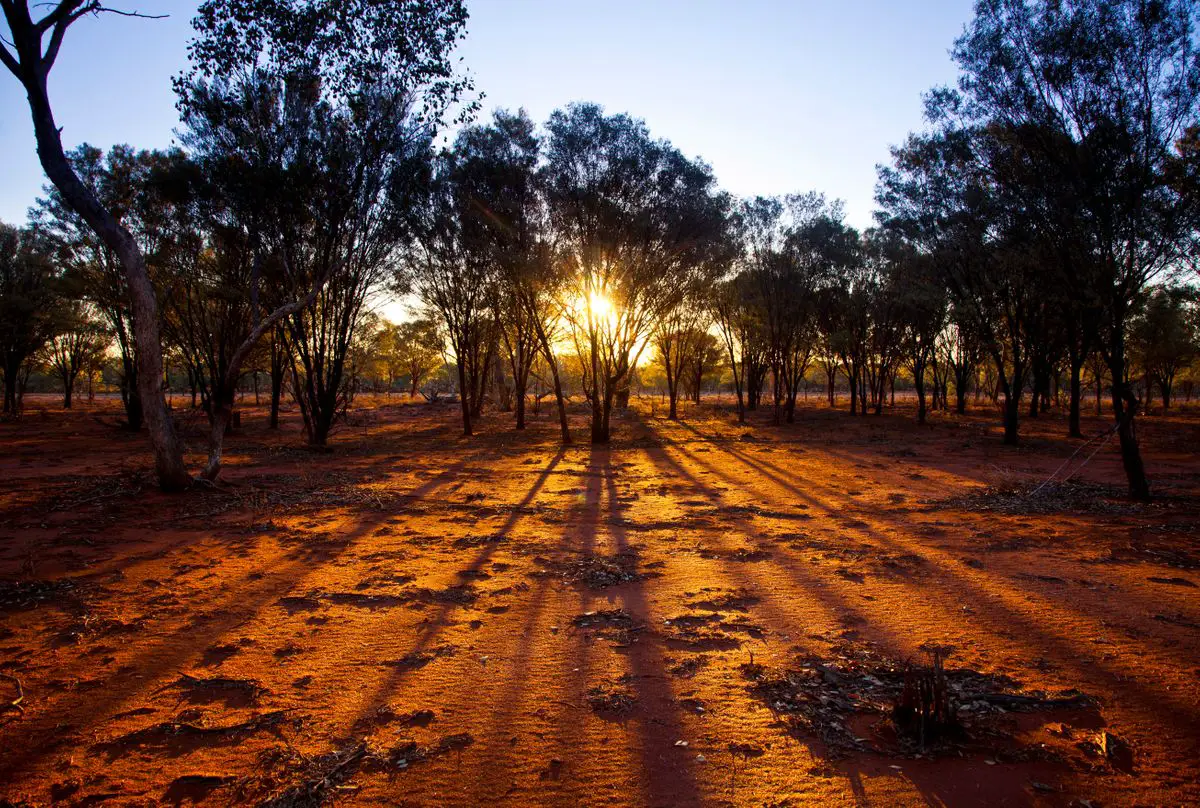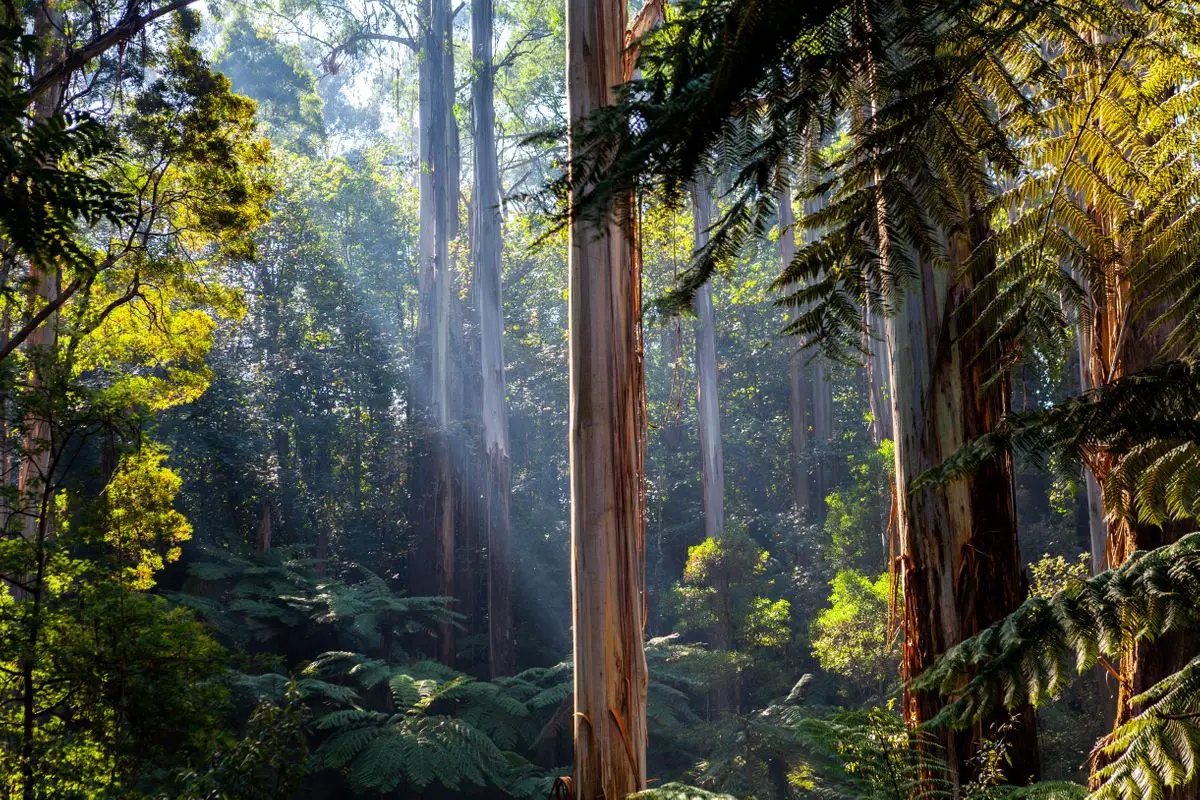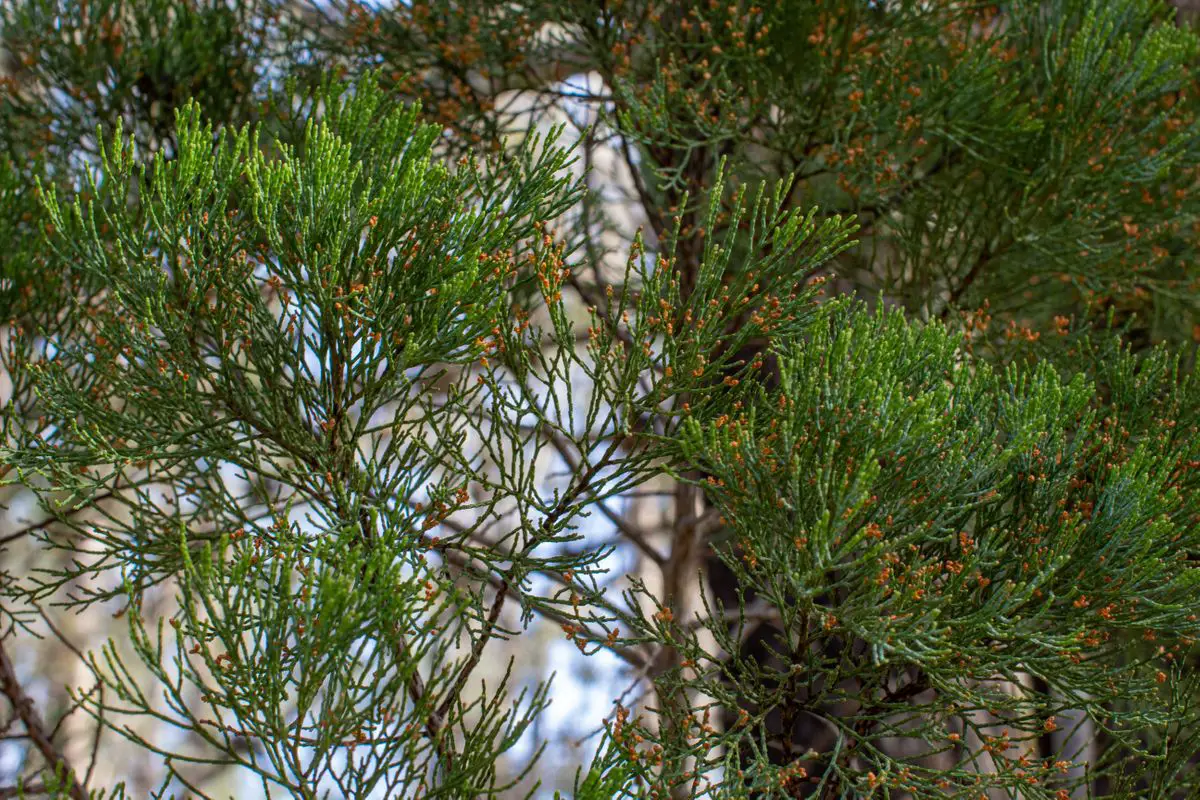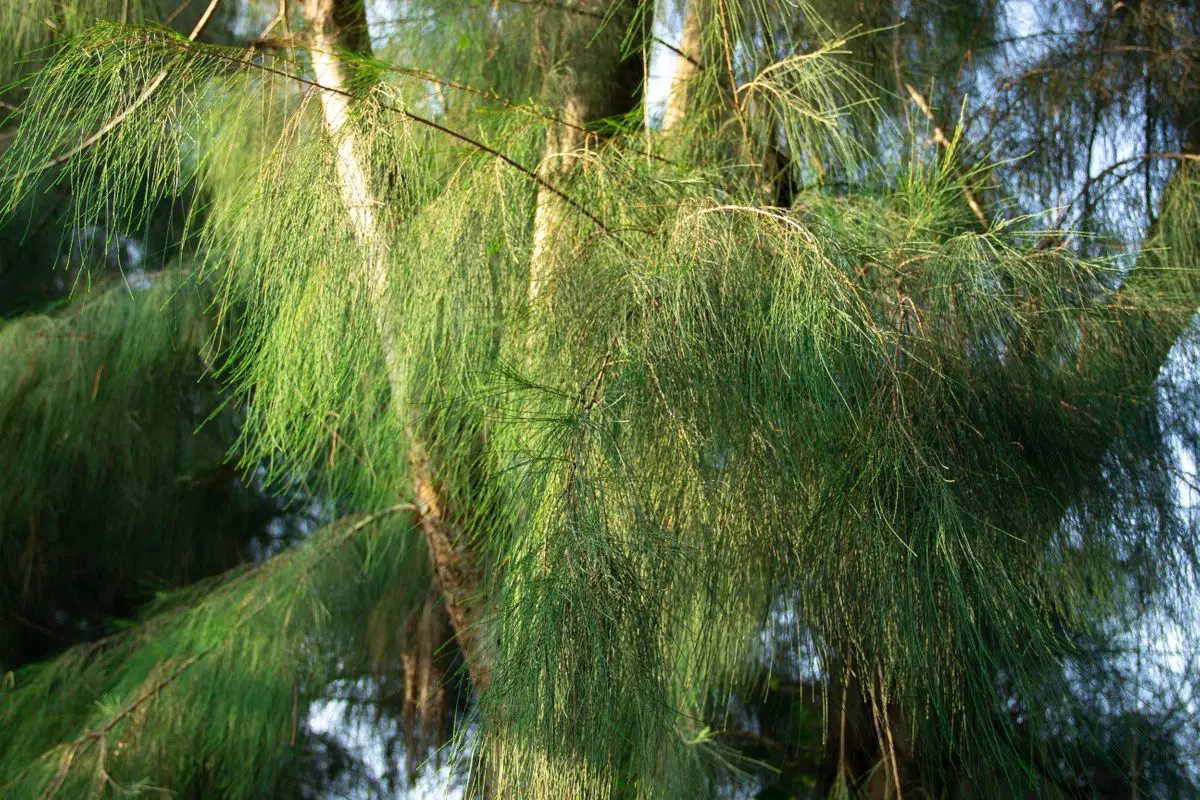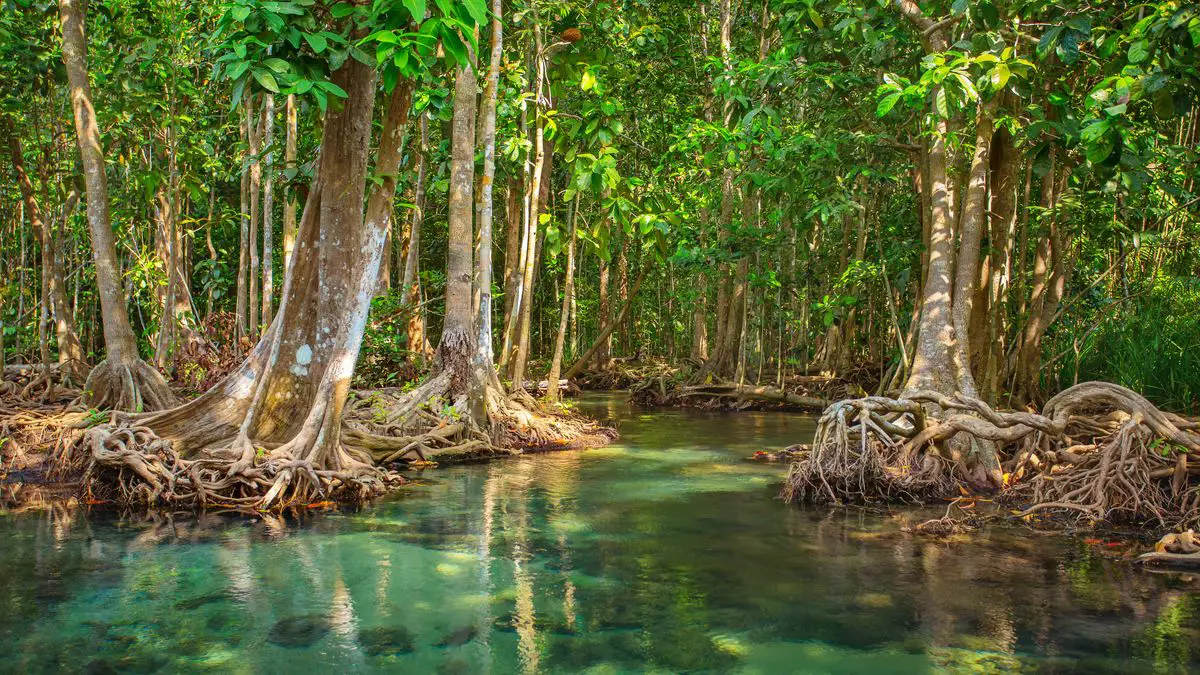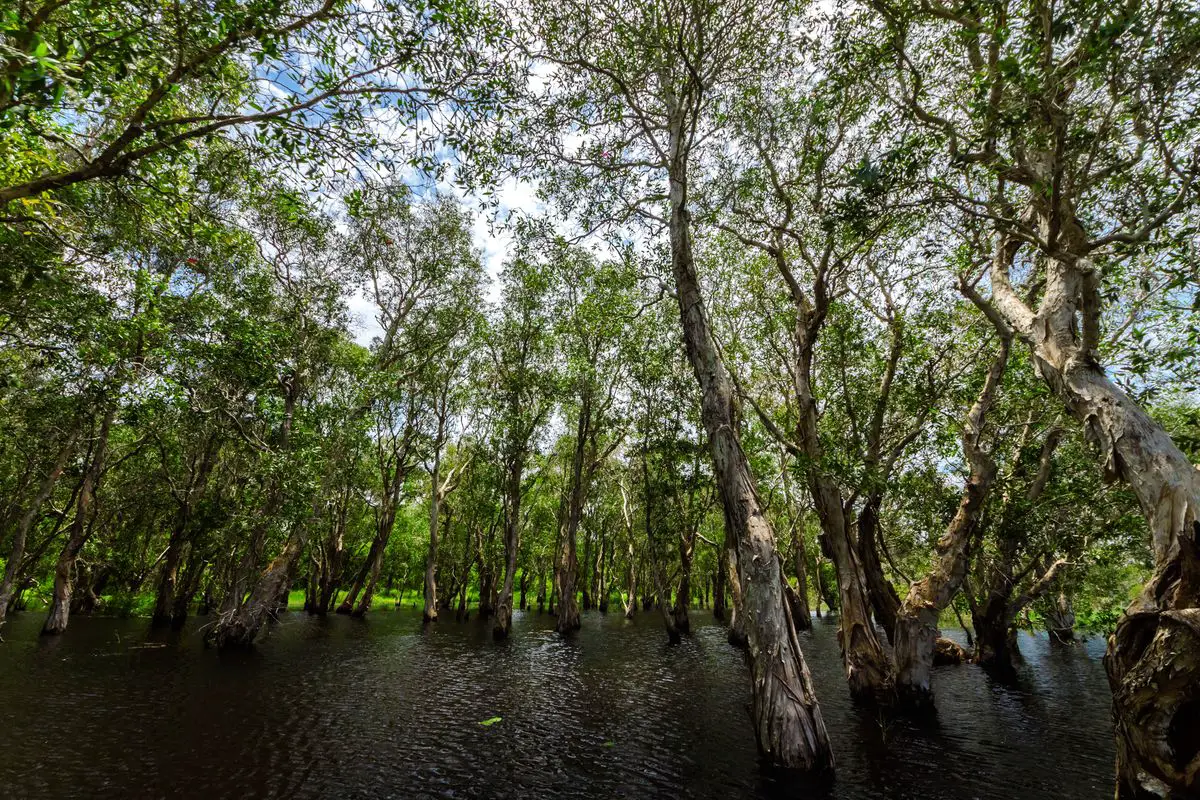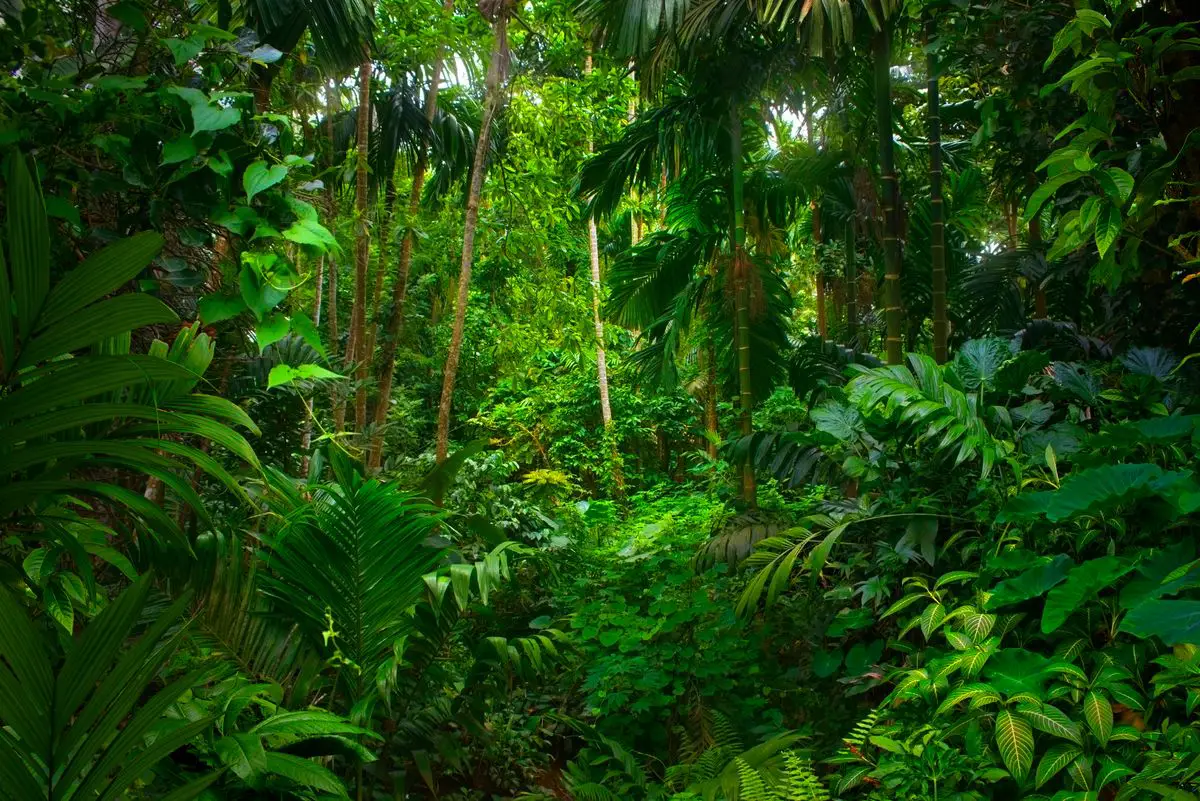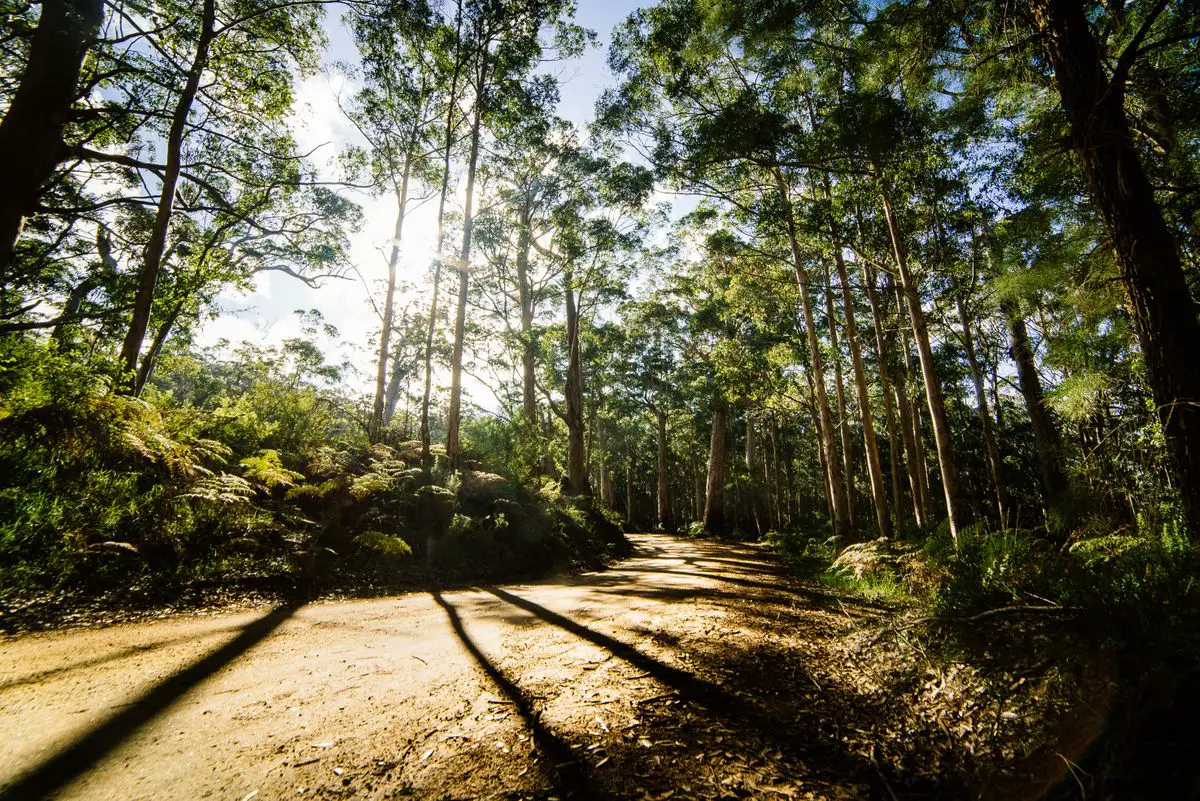Australia forms part of the Oceania Continent. It is characterized by hot, dry conditions, with the massive “Outback” region making up its bulk. However, would you believe that this hot, dry region is also home to some spectacular forests? Below we look at the types of forests found in Australia.
The total forested area of Australia is around 331 million acres, which is around 17% of the country, divided into eight forest types. The bulk of the forested areas are found in Queensland (39%), the Northern Territory (18%), Western Australia (16%), and New South Wales (15%).
Australia is a vast country (2969 million square miles) with different microclimates spread across it. These localized conditions, in turn, influence the type of vegetation, and by extension, the type of forest found there. But where exactly do they occur? And what differentiates them?
An Overview Of The Types Of Forests Found In Australia
Globally, the three broad classifications for forests are Tropical, Temperate, and Boreal.
Each of these forests differs in location, climate (rainfall and temperature), altitude, parent geology, and species found.
The forests which are found in Australia fall under Tropical and Temperate Rainforests.
Australia is located in the Southern Hemisphere at 25.2744° S, 133.7751° E, far from the equator, but on top of the tropic of Capricorn. So, although there are no equatorial forests, the occurrence of tropical forests is not surprising.
Australia’s northern regions are tropical, moving down the east coast to subtropical and temperate in the southeast.
Both the southwest and some areas in the southeast are classified as Mediterranean climates.
Forests cover around 17% of Australia’s landmass. Of these forests, 98% are considered to be “native”; while the rest are “commercial plantations” and “other” (small scale planted forests, farms, and alien species).
When looking at a distribution map, we see that Australia’s forests follow the coastline almost the entire way around, except for the northwest region.
Australia’s forests have been divided into eight different “types.”
These categories are based on the prominent species found there or the structure of the forest itself.
The eight types of forest are:
- Acacia
- Callitris
- Casuarina
- Eucalypt
- Mangrove
- Melaleuca
- Rainforest
- Other native forests
Eucalypts and Acacias are the biggest and most frequently occurring (77% and 8%, respectively).
A Guide To The Forests Of Australia
Due to the range of environmental conditions found across Australia, different micro-climates have resulted in the development of different ecoregions.
Some conditions favor a particular species or growth form, and, over time, these plants develop into a forest.
Factors such as rainfall, temperature, humidity, altitude, geology, fire, and human influences will all contribute to the development and sustain of certain forests.
The majority of Australian forests are found in areas where the mean rainfall is greater than 19,69in.
Forests are distributed through tropical, sub-tropical, temperate, and Mediterranean climate areas, starting at the coast and moving inwards towards the drier areas of the interior.
These forests are not only found in isolation; instead, they can grow in close proximity in some places, forming different communities within the same geospatial area.
All tabled information and information attributed to coverage was sourced from “Montreal Process Implementation Group for Australia and National Forest Inventory Steering Committee, 2018, Australia’s State of the Forests Report 2018, ABARES, Canberra, December. CC BY 4.0.”
Australia’s Acacia Forests, Description, Characteristics And Examples
Acacia forests in Australia cover 26 720 493acres, accounting for around 8.2% of the total forests.
Below are the State/Territories in Australia with the percentage of total Acacia forests, and the actual area covered by Acacia forests found in them.
Australian Capital Territory
Area Covered
- 0 acres
Percentage of total
- 0%
New South Wales
Area Covered
- 1 803 723 acres
Percentage of total
- 7%
Northern Territory
Area Covered
- 3 762 152 acres
Percentage of total
- 14%
Queensland
Area Covered
- 12 654 405 acres
Percentage of total
- 47%
South Australia
Area Covered
- 257 694 acres
Percentage of total
- 1%
Tasmania
Area Covered
- 189 424 acres
Percentage of total
- 1%
Victoria
Area Covered
- 91 829 acres
Percentage of total
- <0.1%
Western Australia
Area Covered
- 7 961 266 acres
Percentage of total
- 30%
Acacia forests are so named for the Acacia (or wattle) species that grow there. There are around 1000 different species of Acacia.
These forests are found in arid or semi-arid areas of Australia, furthest from the coastline.
The species composition of each Acacia forest differs across Australia:
Central Australia
Acacia forests here generally have a lot of Mulga (Acacia aneura)
Eastern Australia
In these areas, Acacia forests have more of a representation of Brigalow (Acacia harpophylla). In these regions, Acacia forests tend to grow on clay soils in flat or undulating areas.
Southern Australia and Tasmania
Some Acacia forests also extend into the higher rainfall regions of Southern Australia and the island of Tasmania.
These forests are frequently found in swampy areas with poorly drained soils and exhibit Blackwood (Acacia melanoxylon).
Silver wattle Acacia forests (Acacia dealbata) are a common feature of the Tablelands areas and foothills.
Australia’s Callitris Forests, Description, Characteristics And Examples
Callitris forests in Australia cover 4 969 025acres, which accounts for around 1.5% of the total forests.
Below are the State/Territories in Australia with the percentage of total Callitris forests, and the actual area covered by Callitris forests found in them.
Australian Capital Territory
Area Covered
- 0 acres
Percentage of total
- 0%
New South Wales
Area Covered
- 3 444 577acres
Percentage of total
- 69%
Northern Territory
Area Covered
- 0 acres
Percentage of total
- 0%
Queensland
Area Covered
- 1 302 903 acres
Percentage of total
- 26%
South Australia
Area Covered
- 163 166 acres
Percentage of total
- 3%
Tasmania
Area Covered
- 1 918 acres
Percentage of total
- <0.1%
Victoria
Area Covered
- 56 273 acres
Percentage of total
- 1%
Western Australia
Area Covered
- 188 acres
Percentage of total
- <0.1%
Callitris forests are also named after the prominent Callitris tree, a type of conifer.
Callitris forests are also found in the drier areas of Australia, particularly stretching inland away from the coastline.
These forests are generally found in small ecoregions, but they can also be found as wider communities.
Other forest types (Acacia or Eucalypt) that have an understory comprised of shrubs, grasses, or herbs will contain Callitris trees.
Callitris forests feature softwood tree species, and strands of Callitris trees occur in sandy soils on flat or undulating areas. They are also found in areas that are protected from fires, generally by rocky outcrops.
A noteworthy tree, the White cypress pine (Callitris glaucophylla), is found in these forests, particularly around Eastern Australia, from south of the Tropic of Capricorn.
Rottnest Island Pine (Callitris preissii) is an endemic species found in the Western regions of Australia.
Australia’s Casuarina Forests, Description, Characteristics And Examples
Casuarina forests in Australia cover 3 055 275acres, accounting for around 0.9% of the total forests.
Below are the State/Territories in Australia with the percentage of total Casuarina forests, and the actual area covered by Casuarina forests found in them.
Australian Capital Territory
Area Covered
- 2 432 acres
Percentage of total
- <0.1%
New South Wales
Area Covered
- 1 264 517 acres
Percentage of total
- 41%
Northern Territory
Area Covered
- 94 901 acres
Percentage of total
- 3%
Queensland
Area Covered
- 672 658 acres
Percentage of total
- 22%
South Australia
Area Covered
- 623 778 acres
Percentage of total
- 20%
Tasmania
Area Covered
- 24 014 acres
Percentage of total
- 1%
Victoria
Area Covered
- 119 310 acres
Percentage of total
- 4%
Western Australia
Area Covered
- 253 666 acres
Percentage of total
- 8%
The Casuarina forests of Australia are considered woodland forests and are characterized by six species of the genus Casuarina and the fifty-nine species of the genus Allocasuarina.
A large proportion of these forests are found in the east. These forests are, however, also found along coastal and riverine areas across Australia.
Not all species of Casuarina are forest species. Some grow in areas that do not classify as forests, especially those that grow in arid conditions.
Trees found in riverine areas can, however, reach heights of 65,62feet and more.
Notable species of these forests include:
- Belah (Casuarina cristata)
- Desert oak (Allocasuarina decaisneana)
- River she-oak (Casuarina cunninghamiana)
Interestingly enough, some of the trees found in these forests have timber similar to European oak trees.
Australia’s Eucalypt Forests, Description, Characteristics And Examples
Eucalypt forests in Australia cover 249 720 572acres, accounting for around 76.8% of the total forests.
Below are the State/Territories in Australia with the percentage of total Eucalypt forests, and the actual area covered by Eucalypt forests found in them.
Australian Capital Territory
Area Covered
- 319 193 acres
Percentage of total
- <0.1%
New South Wales
Area Covered
- 38 203 060 acres
Percentage of total
- 15%
Northern Territory
Area Covered
- 48 836 885 acres
Percentage of total
- 20%
Queensland
Area Covered
- 86 941 177 acres
Percentage of total
- 35%
South Australia
Area Covered
- 10 582 597 acres
Percentage of total
- 4%
Tasmania
Area Covered
- 6 082 388 acres
Percentage of total
- 2%
Victoria
Area Covered
- 17 730 933acres
Percentage of total
- 7%
Western Australia
Area Covered
- 41 024 406 acres
Percentage of total
- 16%
The largest, most diagnostic Australian forests are the Eucalypts forests. These are the most common type of forest and cover the greatest amount of area in Australia.
They are located throughout most of Australia, except for the driest of regions.
In drier regions, Eucalypt forests are restricted to riverine areas.
The highest distributions of these forests occur in Eastern and Northern Australia.
Individual eucalypt trees are not, however, frequently found in tropical, subtropical, or temperate rainforests.
There are roughly 800 species of tree that constitute as part of Eucalypt forests. Due to this range, Eucalypt forests are further divided into 11 subtypes according to growth forms (single-stemmed trees or multi-stemmed “mallee”), crown cover, and tree height.
These species fall under three genera which are:
- Angophora
- Corymbia
- Eucalyptus
Eucalypt Forests: Noteworthy Tree Species
Across Australia
- River red gum (Eucalyptus camaldulensis)
Located in northern forests
- Darwin woollybutt (Eucalyptus miniata)
- Darwin stringybark (Eucalyptus tetrodonta).
Located in southern forests
- Various “Mallee” (Eucalyptus spp)
Located in the south-eastern forests
- Mountain ash (Eucalyptus regnans)
- Messmate stringybark (Eucalyptus obliqua)
- Alpine ash (Eucalyptus delegatensis)
- Silvertop ash (Eucalyptus sieberi)
- Blackbutt (Eucalyptus pilularis)
- Spotted gum (Corymbia maculate)
Located in the south-western forests
- Jarrah (Eucalyptus marginata)
- Karri (Eucalyptus diversicolor)
It is believed that these forests evolved from rainforests as conditions became more adverse.
Eucalypt forests are well suited to survive the frequent drought, high fire frequency, and nutrient-poor soil conditions of Australia. Most of the trees in these forests are evergreen.
In terms of fire, trees in these three genera can recuperate from fires. Their leaves are high in oils which allow them to burn. Their seed banks allow them to propagate after a fire and re-sprout from rootstocks allow parent plants to re-grow.
Australia’s Mangrove Forests, Description, Characteristics And Examples
Mangrove forests in Australia cover 2 109 581acres, which accounts for around 0.6% of the total forests.
Below are the State/Territories in Australia with the percentage of total Mangrove forests, and the actual area covered by Mangrove forests found in them.
Australian Capital Territory
Area Covered
- 0 acres
Percentage of total
- 0%
New South Wales
Area Covered
- 14 475 acres
Percentage of total
- 1%
Northern Territory
Area Covered
- 826 429 acres
Percentage of total
- 39%
Queensland
Area Covered
- 948 336 acres
Percentage of total
- 45%
South Australia
Area Covered
- 32 210 acres
Percentage of total
- 2%
Tasmania
Area Covered
- 0 acres
Percentage of total
- 0%
Victoria
Area Covered
- 2 402 acres
Percentage of total
- <0.1%
Western Australia
Area Covered
- 285 728 acres
Percentage of total
- 14%
Australia’s Mangrove forests are found in coastal areas, in particular the intertidal zones. There are 41 different species of mangrove from 19 different families.
This equates to more than half of the world’s mangrove diversity.
Mangrove forests are found in tropical, subtropical, and temperate coastal rivers, estuaries, and bays.
Fine sediments, washed down rivers and from the ocean, form the “soil” for these Mangrove forests.
A notable species found in these forests is: white mangrove (Avicennia marina), which is commonly found throughout the range, has three subspecies found in different areas of Australia.
- West to South Australia: Avicennia marina marina
- West, through North, and into East Australia: Avicennia marina eucalyptifolia
- East to South Australia: Avicennia marina australasica
Australia’s Melaleuca Forests, Description, Characteristics And Examples
Melaleuca forests in Australia cover 15 770 584acres, which accounts for around 4.8% of the total forests.
Below are the State/Territories in Australia with the percentage of total Melaleuca forests, and the actual area covered by Melaleuca forests found in them.
Australian Capital Territory
Area Covered
- 0 acres
Percentage of total
- 0%
New South Wales
Area Covered
- 166 443 acres
Percentage of total
- 1%
Northern Territory
Area Covered
- 2 564 536 acres
Percentage of total
- 16%
Queensland
Area Covered
- 12 704 199 acres
Percentage of total
- 81%
South Australia
Area Covered
- 83 163 acres
Percentage of total
- 1%
Tasmania
Area Covered
- 61 806 acres
Percentage of total
- <0.1%
Victoria
Area Covered
- 47 017 acres
Percentage of total
- <0.1%
Western Australia
Area Covered
- 143 420 acres
Percentage of total
- 1%
Melaleuca forests in Australia are mostly located in northern Australia.
These forests are so named for the Melaleuca species occurring there, of which there are approximately 200 species (not all of these are forest species, however).
Many of these species are also endemic to Australia.
Of the Forest-dwelling melaleucas, some notable species are:
- Broad-leaved paperbark (Melaleuca viridiflora)
- Weeping paperbark (Melaleuca leucadendra)
As seen above, many of these trees are referred to as paperbark or tea-trees.
This is due to the common occurrence of the bark peeling off the trunk to reveal multiple thin layers of paper-like cork.
The color variations of these trees’ bark range from almost black, to light and dark brown, to off-white.
The most common places to find this type of forest are in estuarine plains and seasonal swamps, especially in northern Australia, where it grows as low woodland.
Other places that these forests occur are along rivers in strips along the bank and swampy areas with poorly drained soil on the east coast of Australia and north-western Tasmania.
Australia’s Rainforest Forests, Description, Characteristics And Examples
Rainforests in Australia cover a total area of 8 847 981acres, which accounts for around 2.7% of the total forests.
Below are the State/Territories in Australia with the percentage of total Rainforests, and the actual area covered by Rainforests found in them.
Australian Capital Territory
Area Covered
- 0 acres
Percentage of total
- 0%
New South Wales
Area Covered
- 1 467 104 acres
Percentage of total
- 17%
Northern Territory
Area Covered
- 708 935 acres
Percentage of total
- 8%
Queensland
Area Covered
- 4 894 308 acres
Percentage of total
- 55%
South Australia
Area Covered
- 0 acres
Percentage of total
- 0%
Tasmania
Area Covered
- 1 728 386 acres
Percentage of total
- 20%
Victoria
Area Covered
- 48 724 acres
Percentage of total
- 1%
Western Australia
Area Covered
- 524 acres
Percentage of total
- <0.1%
Rainforests in Australia are found in areas with high rainfall.
They are closed canopy areas, are in areas that do not receive frequent fires, and will generally have no to very little representation of eucalypts in them.
Rainforest species in Australia are similar to most other rainforests worldwide. The plants are shade tolerant, especially as saplings. There is also the presence of an understory (generally saplings of mature trees).
Rainforests are found across most of Australia, except for South Australia.
The bulk of which occurs in Queensland and Tasmania.
The Five Classifications Of Australia’s Rainforests
- Tropical and Subtropical
These are found in wet coastal regions in northern and eastern Australia.
- Warm Temperate
These are found in New South Wales and Victoria.
- Cool Temperate
These are found in small areas at higher altitudes in New South Wales and Queensland and in Victoria and Tasmania.
- Dry Rainforests
These forests are found in sub-coastal and inland regions of northern and eastern Australia and the northern reaches of Western Australia. These forests are found in areas that are sheltered from fire.
- Monsoon Rainforests
These are found in seasonally dry coastal and sub-coastal areas in northern Australia.
These divisions are based on rainfall and latitude.
Although Rainforests are small compared to some of the other forests, they are critically important in bio-diversity.
Even though Rainforests make up approximately 2% of the total forest coverage in Australia, 60% of Australia’s plants, 60% of butterflies, 40% of birds, and 35% of mammal species are found here.
The tropical rainforest in North Queensland supports a high diversity of marsupial, frog, and butterfly species.
The cool temperate rainforest found in Tasmania supports a diversity of fungi, mosses, and lichens.
Australia’s Other Native Forests, Description, Characteristics And Examples
The Other Native Forests in Australia cover a total area of 14 033 841acres, which accounts for around 4.3% of the total forests.
Below are the State/Territories in Australia with the percentage of total “Other Native Forests”, and the actual area covered by “Other Native Forests” found in them.
Australian Capital Territory
Area Covered
- 440 acres
Percentage of total
- <0.1%
New South Wales
Area Covered
- 2 872 217 acres
Percentage of total
- 20%
Northern Territory
Area Covered
- 1 735 028 acres
Percentage of total
- 12%
Queensland
Area Covered
- 7 339 477 acres
Percentage of total
- 52%
South Australia
Area Covered
- 257 775 acres
Percentage of total
- 2%
Tasmania
Area Covered
- 169 885 acres
Percentage of total
- 1%
Victoria
Area Covered
- 794 693 acres
Percentage of total
- 6%
Western Australia
Area Covered
- 864 325 acres
Percentage of total
- 6%
These forests are small and distributed across Australia. They are named according to the most prominent genus of plants found in them and include:
- Agonis
- Atalaya
- Banksia
- Hakea
- Grevillea
- Heterodendron
- Leptospermum
- Lophostemon
- Syncarpia
Although not less important than the others, these forests are smaller and are generally forest communities.
Conclusion
Australia is a diverse landscape, with many different ecoregions developing from micro-climates. Along with fire and human influence, these factors have contributed to creating the eight types of forests, spread across the country, providing sanctuary and benefit for Australia’s human and animal counterparts.
Sources
https://www.agriculture.gov.au/abares/forestsaustralia/australias-forests
https://www.agriculture.gov.au/abares/forestsaustralia/profiles/acacia-2019
https://www.agriculture.gov.au/abares/forestsaustralia/profiles/callitris-2019
https://www.agriculture.gov.au/abares/forestsaustralia/profiles/casuarina-2019
https://www.agriculture.gov.au/abares/forestsaustralia/profiles/eucalypt-2019
https://www.agriculture.gov.au/abares/forestsaustralia/profiles/mangrove-2019
https://www.agriculture.gov.au/abares/forestsaustralia/profiles/melaleuca-2019
https://www.agriculture.gov.au/abares/forestsaustralia/profiles/rainforest-2019

